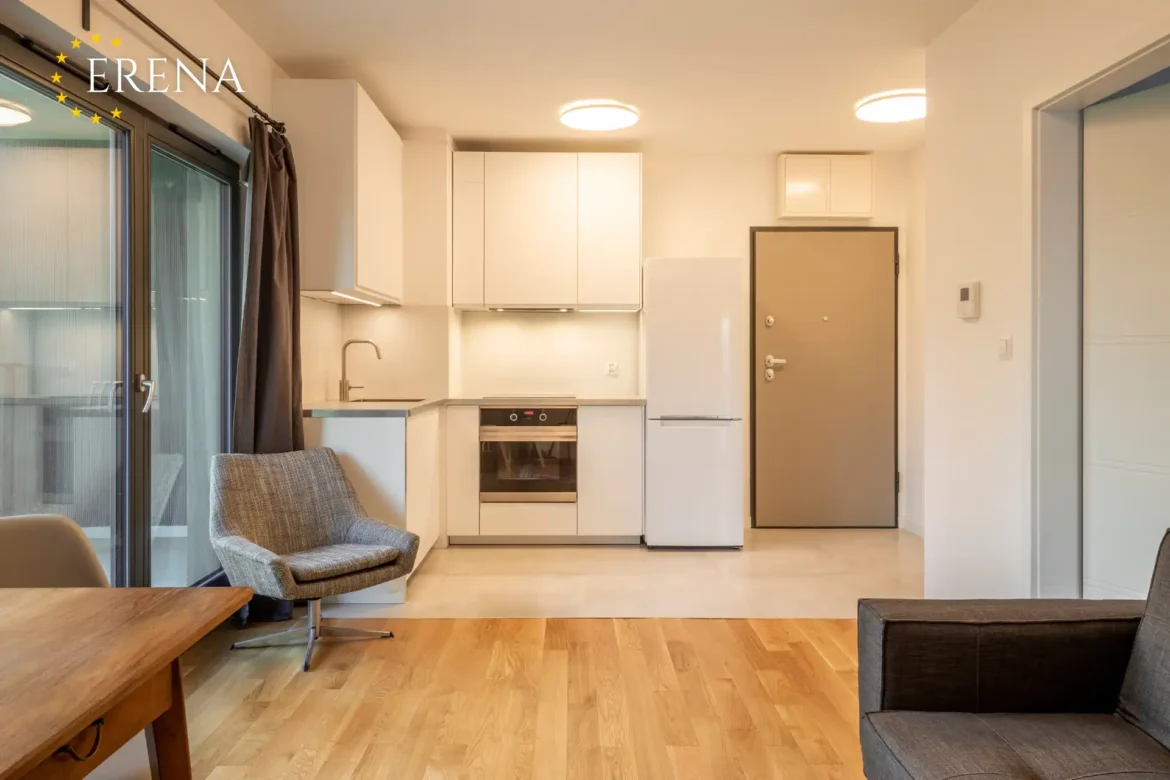Introduction
Frankfurt am Main is one of Europe’s leading financial centers and a key city in Germany, hosting the headquarters of international banks, major corporations, and the European Central Bank (ECB). The rapid increase in professionals, students, and expatriates has led to a growing demand for housing, especially in central districts.
Given the high cost of traditional housing in Frankfurt, micro-apartments – compact yet functional living spaces – are becoming increasingly popular. These properties not only cater to the needs of city dwellers but also represent a highly attractive investment opportunity.
In this article, we will explore what micro-apartments are, their prices in Frankfurt, current market trends, and the future prospects of this housing segment.
1. What Are Micro-Apartments and Why Are They in Demand?
Micro-apartments are small residential units, typically ranging from 20 to 40 square meters. Despite their limited size, they include all essential living spaces:
• Kitchen area
• Sleeping area
• Bathroom
• Sometimes a small workspace or mini-living room
These compact apartments in Frankfurt are particularly sought after by young professionals, students, and expatriates, as they offer the ability to live in prime locations at a lower cost compared to larger apartments.
Key Advantages of Micro-Apartments:
• Lower rent and utility costs
• High liquidity in the real estate market
• Functional and well-planned layouts
• Proximity to business districts and transport infrastructure
• Attractive investment potential due to high rental yields
With a growing shortage of affordable housing in Frankfurt, micro-apartments have become a practical alternative to traditional flats, maintaining strong demand from both renters and buyers.
2. Micro-Apartment Prices in Frankfurt
Purchase Prices
The price of micro-apartments in Frankfurt depends on several factors:
• Location
• Construction quality and finishes
• Surrounding infrastructure
On average, the price per square meter for a micro-apartment is:
• City Center (Innenstadt, Westend): €8,000–15,000 per m²
• Popular districts (Bockenheim, Sachsenhausen): €6,500–10,000 per m²
• Suburban areas: €4,500–7,000 per m²
Thus, purchasing a 25–35 m² micro-apartment in Frankfurt typically costs between €200,000 and €450,000.
Rental Prices
Frankfurt is one of Germany’s most expensive cities in terms of rental costs. The average rental prices for micro-apartments are:
• City center – €30–50 per m² per month
• Mid-range districts – €20–35 per m²
• Suburbs – €15–25 per m²
This means that renting a micro-apartment in Frankfurt costs between €800 and €2,000 per month, depending on location.
For investors, the gross rental yield (Brutto-Rendite) of micro-apartments in Frankfurt is approximately 3.5–5% per year, making them a highly attractive asset compared to traditional apartments.
3. Key Market Trends in Micro-Apartments
1. Growth of Specialized Housing Complexes
Developers are actively building residential complexes with micro-apartments, often featuring:
• Fitness centers
• Co-working spaces
• Bicycle parking
• Lounge areas for residents
These projects are targeted at young professionals, who prioritize convenience and a prime location.
2. Increasing Popularity of Serviced Apartments
Many micro-apartments are now offered as “Serviced Apartments”, which include additional services such as cleaning, laundry, and concierge services.
3. Rising Demand Among Young Professionals
Most renters of micro-apartments are professionals aged 25–40, working in banking, IT, and consulting.
4. Growing Interest from Investors
Due to their affordability and high liquidity, micro-apartments are becoming a preferred investment option for private and institutional investors.
4. Future Prospects for the Micro-Apartment Market in Frankfurt
The future of this market looks very promising, driven by several factors:
1. Population Growth
Frankfurt continues to attract expatriates, students, and highly skilled professionals, maintaining strong demand for compact housing.
2. Limited Real Estate Supply
Due to land scarcity, the supply of micro-apartments remains restricted, which will likely result in continued price appreciation.
3. Shifting Lifestyles
Modern renters favor flexible and convenient housing options, making micro-apartments even more relevant.
4. Technological Advancements
New micro-apartment projects increasingly incorporate “smart home” technologies, such as automated lighting and heating control, enhancing their appeal.
5. Growing Institutional Investment
Major real estate investment funds are actively financing micro-apartment residential complexes, confirming the long-term viability of this segment.
Conclusion
Frankfurt is experiencing a micro-apartment boom, driven by high property prices, changing lifestyles, and limited housing supply.
For investors, micro-apartments present an excellent opportunity, offering high rental yields and strong liquidity. They are in high demand among young professionals, students, and expatriates, while limited real estate supply ensures continued price appreciation.
If you are considering real estate investments in Germany, micro-apartments in Frankfurt could be a secure and promising asset with stable long-term returns.
The Boom of Micro-Apartments in Frankfurt: Prices, Trends, and Prospects
612

